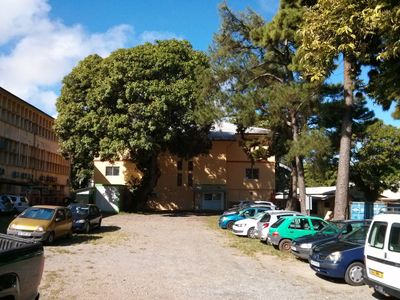Prof. Kirill Korolev's opinion article, Turning ecology and evolution against cancer, was published online April 17 in the journal Nature Reviews Cancer. The piece was co-authored by J. B. Xavier (MSKCC) and J. Gore (MIT) and you can read it here.
Congratulations to Elham Azizi! Elham will be receiving an award in the Best Student Paper Competition at the upcoming New England Statistics Symposium (NESS) for her paper in the Galagan Lab, Learning Modular Structures from Network Data and Node Variables. The 28th NESS conference is being hosted by the Harvard School of Public Health and will be held on April 25-26. Well done Elham!
Teresa Wang’s work in Avi Spira and Marc Lenburg’s lab was presented by co-author Stacy J. Park from UCLA at the annual American Association for Cancer Research meeting held in San Diego this month. The abstract, The impact of e-cigarette exposure on pulmonary epithelium gene expression and transformation, has been gaining lots of attention this week, including this feature in Nature.
Congratulations to Chetanya Pandya for his work with Karen Allen and Brandon Xia. Their new paper was published on February 27th in Proteins: Structure, Function, and Bioinformatics. Read it here: Structure-guided approach for detecting large domain inserts in protein sequences as illustrated using the haloacid dehalogenase superfamily Great job!
Yevgeniy Gindin's work in Paul Meltzer's lab in the Center for Cancer Research at the NIH has been published on molecular systems biology. The new paper was published in the March 28th issue and you can read it here: A chromatin structure‐based model accurately predicts DNA replication timing in human cells, Great work, Dr. Gindin!
Congratulations to Vinay Kartha for his work in Rick Myers' lab at the BUSM. The new paper is published in the February 27th issue of PLOS Genetics. MicroRNAs Located in the Hox Gene Clusters Are Implicated in Huntington's Disease Pathogenesis. Great work!
Instructors Mia Anderson and Raquell Holmes from improvscience will be conducting a Professional Presentations workshop for students in BU Bioinformatics on March 21 and 24. Students will take part in exercises to improve their audience interaction and help develop their unique style of performing a scientific talk. Dr. Holmes was recently interviewed in Nature. The article, “Communication: Spontaneous Scientists” is featured in the NatureJobs section and you can read it here: www.nature.com/nature/journal/v505/n7481/full/nj7481-121a.html.

I have spent the last month working in a research lab in the Pasteur Institute in Cayenne, the capital of French Guiana, and also its largest city (population 60,000). Although it is technically part of France (the local currency is the euro), getting around here feels nothing like driving through the French countryside. Cayenne is corralled by the Atlantic Ocean in the North, and dense tropical rainforest in the South. There are only two national highways, one going westward to Suriname, and the other running the opposite direction towards Brazil. Both roads eventually come to an abrupt stop at the national border. To keep going you must cross the swells of a mile-wide river, typically aboard a traditional canoe. It's high on my list of things to do before I leave.
The Pasteur Institute employs around 80 scientists that work on public health risks (mainly dengue and malaria prevention), as well as basic virology and parasitology research. The lab where I am doing my four-month internship is interested in determining the viral diversity of the bats and rodents living in environments that have been disturbed due to human activities. Several cases of Hantavirus Pulmonary Syndrome have been reported in French Guiana during the past few years, and although rodents are thought to be the reservoir for these viruses, they have not been systematically studied. My lab recently started capturing these rodents, taking blood and tissue samples, and sequencing them using high-throughput technology. My job is to analyze all of the metagenomic data they generated and identify what viruses are present in each sample. Fun stuff!
I might be a romantic, but I have a soft spot for the idea of grabbing my laptop, parachuting into a remote region, collaborating with the local scientists, and contributing to a cutting-edge research question that has important public health implications. A few years from now, if I'm ever down because one of my papers got rejected, or my R01 grant didn't get renewed, I'll remember that in the third year of my PhD, the Bioinformatics Program at Boston University thought it was a good idea to send me to the Amazon to look for deadly viruses in jungle rats. I'll remember this, and I'll be okay.
Nacho received a BU Bioinformatics Graduate Research Fellowship, which supports students who work on collaborative projects in the labs of participating faculty members for periods of 3-6 months.
Evan received a 2014 NIH Graduate Student Research Award (NGSRA) for his poster in the Bioinformatics/Structural Biology category, Informing Model Organism Selection for Human Disease Research through Evolutionary Profiling. The award, which comes with a $1000 travel prize, was presented at the 10th Annual NIH Graduate Student Research Symposium. Evan is part of the BU-NIH Graduate Partnerships Program, working for Dr. Andreas Baxevanis in his group at the National Human Genome Research Institute (NHGRI).